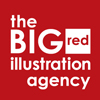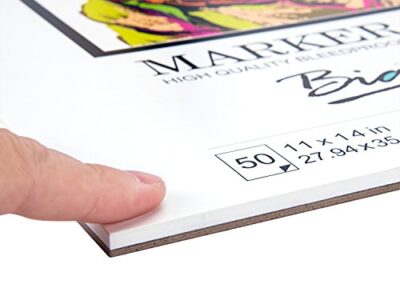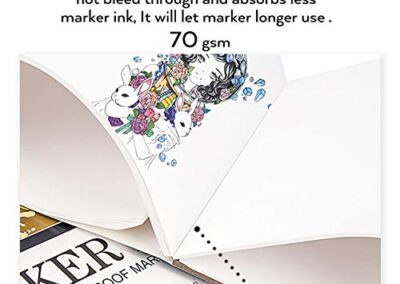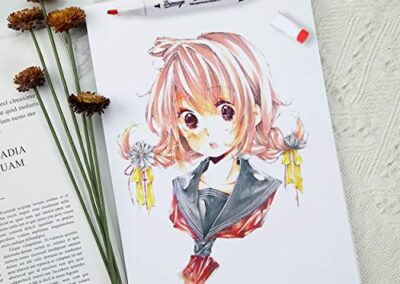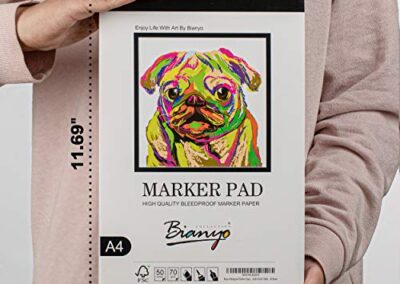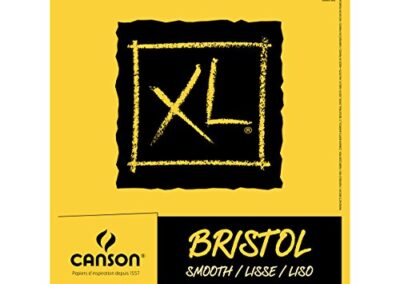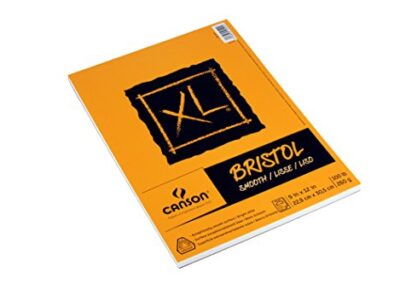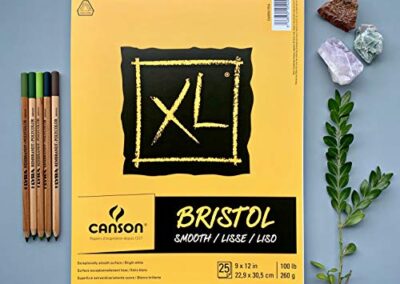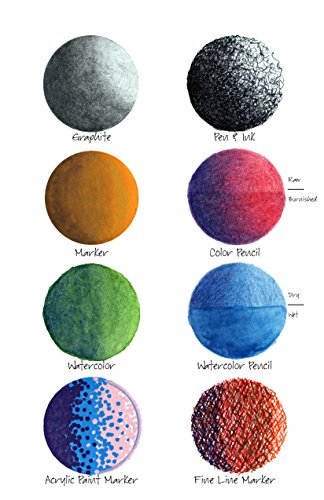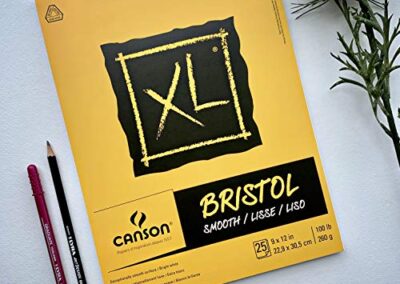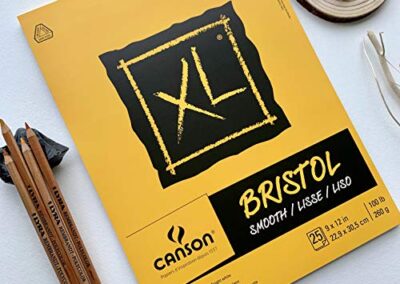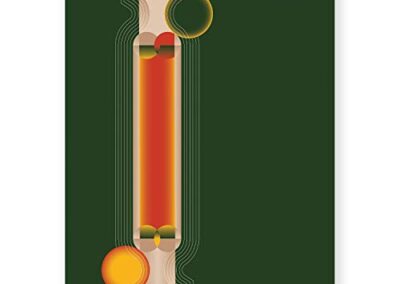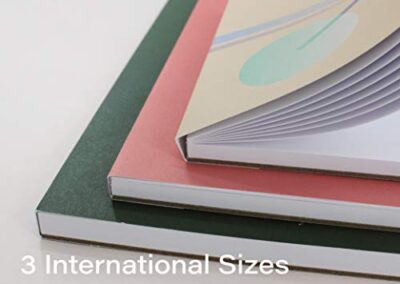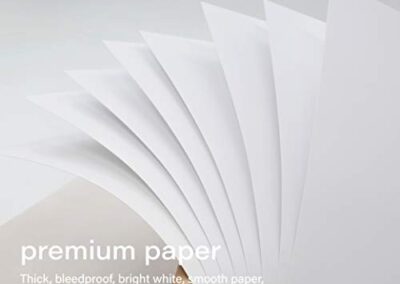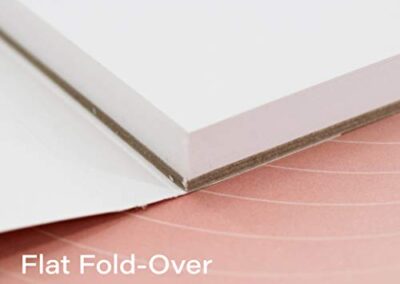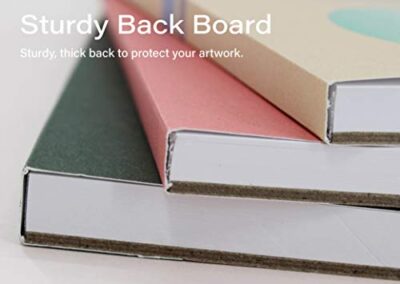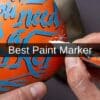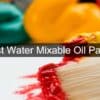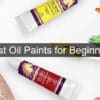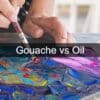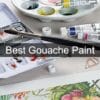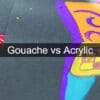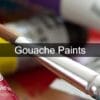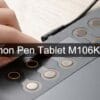Best Paper for Copic Markers

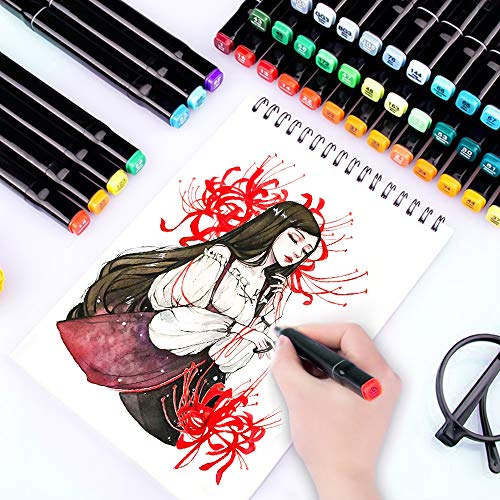
The best Copic Marker Paper needs to be Bleedproof, Durable and Cheap
The best paper for Copic markers needs to meet certain requirements. Some Copic marker users, artists and crafters need packs of cardstock for final art, but others need practice sheets.
This review will walk you through all the features that each product offers so you can decide what’s appropriate for your use so you can ensure you’re selecting the correct paper for your work.
Copics are known for their smooth blending capabilities and rich colour in a huge variety of shades. You need to use the right paper for your needs, including using high-quality ink. Low-quality papers can dry the ink too quickly, and will also make a permanent mess underneath the surface of a page.
They will also dry quickly and will use more ink than necessary, which will limit the amount of time you use to blend the colour of your markers.
What to Look for When Buying Papers for Copic Markers
Each type of marker sheet has pros and cons depending on your work. You need a very smooth paper surface and texture of the paper and it’s important not to use acid-free paper and archival quality papers for finished artworks.
Acid free paper is a very smooth surface, but it’s too thin for use in markers. Archival quality paper is thicker and will wipe clean easier than other papers, but the texture may be like sandpaper on marker blocks.
There are four different surfaces that you can buy to create your artwork with Copic Markers – rough surface or smooth, cold press or hot press.
The size of paper is also crucial in your creative process and will determine how much ink it takes to work on your artwork.
Weigh up your priorities and take time to think before going to your local art supplies shop or hitting the “Add to Cart’s button” on Amazon. Check out the quality of your marker sheet and the thickness and shape of the ink from your markers and pens; it’s important to select the right paper and the copic paper selections can be daunting.
Disclaimer – This website contains affiliate links. If you find the information useful, click on a product link and make a purchase, a small commission will be earned by Big Red Illustration
The top 5 papers for Copic Markers
1. Copic Marker XPBC Blending Card
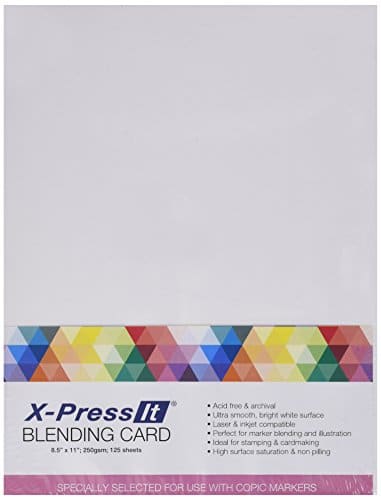
About
- 8-1/2-Inch by 11-Inch
- Express Blending Card
- White
- 125 Per Pack
X-press-It blend cards are made especially for Copic art markers. With a 250 gsm build, the 125 sheets of thick paper hardly showed any bleeding even after spreading multiple layers of inks on the surface.
The silky-smooth paper makes gradients free of tonal gaps and feathering. The bright white paper retains the original colours of your Copics even when viewed on-screen after scanning. The same can be expected with a laser printer as it absorbs the inks well. At 8.5′′ x 11″ the blend card is suitable for both largish drawings or if cut down, can of course cover smaller pieces too.
As expected, cardstock works better than paper. The gold and silver inks did not bleed onto the adjacent layers at all while retaining its original colour tone on plain paper.
2. Bee Paper Company Bleedproof Marker Pad

About
- Sheet Size 11-Inch by 14-Inch
- Sheet Count 60
- Acid-free
- Natural white
- Approved for use with Copic pens
- Ultra-smooth sheet
This paper is an amazing product that is affordable and high-quality. I have had a lot of experience with marker paper, and this is easily one of my favourites.
I use this for both sketching and final work because it shows the colours wonderfully. The paper is also a nice weight, not too heavy but not too light either, so it has the perfect feel for markers.
This paper is comparable in appearance and weight to Strathmore’s Smooth Surface Bristol Paper, which costs quite a bit more than this. Overall, it’s a great product and I would recommend it to anyone!
I would recommend this paper to anyone looking for white, off-white paper. It’s a sturdy paper and quite simply beautiful!
3. Bianyo Bleedproof Markers Pad

About
- Bleedproof Marker Paper Pad
- A4(8.27″X11.69″)
- 50 Sheets
- 18 LB / 70 GSM
- Glue-Bound
- 100% Cotton
- White
- Ideal for Use with Copic Markers and Ink Mediums
Bianyo Bleed proof Marker Paper Pad, 8.27″ x 11.69″, 50 Sheets Sketch Pad For Drawing, acid-free, natural white (70 grams per square meter) sheet is approved for use with Bianyo and Copic markers.
This ultra-smooth sheet has an excellent surface for use with pen and ink, technical pens, water-based and permanent markers. 50 sheet per tape bound paper pad and coupled with the lightweight build, the 8.27″ x 11.69″ sketchbook variant serves as the ultimate companion for travelling artists.
The 70gsm sheet is thin and lightweight and is easy to use with colourless blender tips on it to remove the ink it picked up while blending. The pad is not chemically treated so it will not affect the colour of your markers or pens.
4. Canson XL Series Bristol Pad
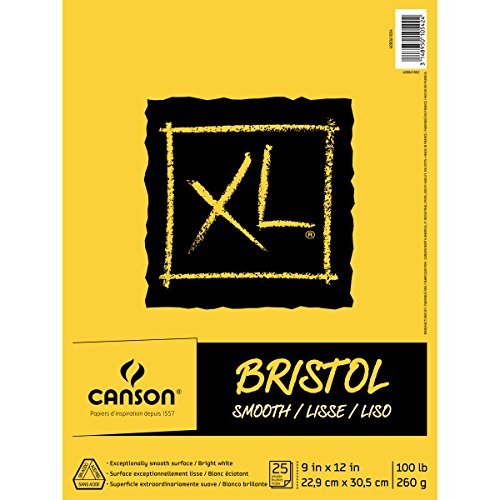
About
- Canson XL Series Bristol Pad
- Heavyweight Paper for Ink, Marker or Pencil
- Smooth Finish
- Fold Over
- 100 lbs
- 9 x 12 Inch
- Bright White
- 25 Sheets
25-sheet sketchbook has the makings of the best Copic marker sheet pad. The XL Series offers a specific variant for markers, and the bristol pad is just as versatile.
The bright white colour functions as an impeccable canvas for alcohol-based markers, acrylics, brushes, pens, watercolour pencils, and graphite pencils. The paper is more appropriate for a finished artwork than a space to practice your drawing and because the sheet remains flat even after it picks up the colours, you can easily set your artwork on the scanner.
If you want to digitize your illustrations, your masterpieces will translate beautifully on the computer screen.
5. Croma Marker Pad

About
- Croma Marker Pad
- Thick & Bleedproof
- Bright White Paper
- 180 GSM
- A3/ A4/ A5
- 30 Sheets (A3, 11.7 x 16.5 in)
I would recommend this product to people who like blending colours.
The paper is thick and bleed proof making it easy to use with markers. The paper also has a clean tear-off which makes it easier for you to switch between jobs and different types of writing.
It also has a fold-over binding that protects your artwork and it is sturdy so that the artwork does not crease.
It’s a good quality paper that works well with alcohol-based markers and it does exactly what it says that it would do if you are looking for paper to draw on that comes in a range of sizes.
I have always been a fan of the brand ‘Croma’ and this paper does not disappoint. A marker pad suitable for Professional Drawing, Coloring, Manga, Comic, Illustrations, Artists and Designers.
Important facts about Copic Marker Papers
Smooth Application
Copic markers may glide over regular papers because they have an easier way to use them. Using the right tools will allow you to apply the smoothest application possible. The right tools can make your sketching experience more fun and more enjoyable. This will save you a whole lot of effort and time, but also make you more fun as you work.
Texture
Texture is the best indicators of quality paper and is a reliable indication of quality. Cheap paper is not only weak, thin and transparent but also very smooth or “bald” with absolutely no indication of texture.
The best quality papers have a “raised surface” that shows the pores in the wood pulp or other material used to make paper out of. If you were to run your fingers over it feels like a coarse sponge making it more absorbent.
Research shows that this rough texture is what gives colour a longer lasting and deeper saturation. Best-in-class markers have smooth, fine nibs so you don’t want paper to be overly abrasive or else your colour will bleed into the fibres of the paper blurring the edges and giving you less control over your artwork.
Time-tested brands have unique structures that prevent colour from bleeding into the paper. In the best papers, this structure is repeated in multiple layers of the paper creating a superior surface for your markers to glide across.
That’s why Copic and other top markers look so vibrant on good quality paper; the raised texture acts an extension of the nib so the tip of your marker is in contact with as little paper as possible.
Copic papers have a honeycomb texture on top and, while raised, it’s not too abrasive. This allows it to provide a solid surface for colour but not become rough or overly textured to the point where it feels scratchy and interferes with artistic expression.
The texture of paper plays a significant role in the amount of control you have over your marker; the less texture there is, the sooner you will run into unwanted bleeding and colouring outside your lines.
Size
The size of the paper is a key factor to picking the best markers for your project. You have to give some thought to the size and shape of the papers, such as the height of certain markers. Copic markers can also be bought in quantities of 10-inch A4 sizes by 7-inch by 10 inch or 15-inches by 11-inch paper.
Strengthens After Applying
Copic markers can bleed through paper making it hard for artists to handle them. To avoid bleed-through, artists use a variety of techniques. Some artists use a lot of paper in order to protect the underlayer, while others apply fixative on top of their work.
Copic markers are alcohol-based and contain no oil or wax as some other marker brands do. The ink in Copics contains high-quality pigments giving them rich colour and smooth application. Copic colours stay true for a long time even after rubbing, so it gives the artist the ability to produce vibrant and beautiful work.
Is the weight of the paper important?
Usually, the heavier the paper, the better the sketchbook or paper pack. Although weight is an important measure to consider when buying art supplies such as paint paper, markers or colouring books, a lot also depends on the type of work you want to achieve and what techniques are used.
For best results with Copic Markers, you should use high-quality art papers.
Shrink-resistance
The thickness of paper plays an important role in determining a sheet’s susceptibility to shrinkage. Shrinkage is the result of changes in moisture content that cause materials to contract or expand.
Papers containing high amounts of wood pulp are more likely to shrink than those containing 100% cotton or synthetic fibres. Shrinkage is typically measured in the unit of percent change per inch (in) of length, where an 8 in change represents a 1% increase in length.
Paper that shrinks greater than 5% when exposed to high heat and humidity may be difficult to use due to warping or curling, especially when it is used with markers. This size of shrinkage also makes it more likely for paper fibres to tear or split while colouring, making the surface overly rough and less receptive to blending without the help of a fixative.
Tearing resistance
Paper that tears is more easily damaged than paper that does not. It is important to select a marker sheet with high tear resistance to avoid the need for extra repair from erasing or colour blending.
Fibres in papers are held together by lignin, a complex organic compound that helps bind and strengthens them during their formation and drying. The amount of lignin present in a sheet of paper determines how likely it is to tear, and the higher the lignin content, the stronger and more resistant a sheet will be to tearing.
High levels of lignin also provide increased durability for marker colouring due to their resistance against brittleness. In addition, papers with high percentages of cotton or synthetic fibres are less likely to tear than those containing high amounts of wood pulp.
Bending & folding resistance
Marker colouring often requires frequent bending and folding of the paper during various stages of the process. For example, testers may need to fold a piece in half multiple times while working on specific shades of colour or hues.
Paper that is too thin or brittle may easily tear and break while being bent, making it difficult to use in marker colouring. Inconsistent thickness throughout the page can also lead to problems with bending such as excessive creasing or crinkling along the fold lines.
Excessive folding can cause paper to lose its shape or buckle over time, especially if the fibres are not strong enough to withstand the repeated stress.
Surface smoothness
A smoother surface is an important consideration when using markers that produce layered colouring effects such as shading or blending. To determine how smoothly a sheet of paper can be coloured with a marker, we measure its smoothness in terms of its resistance to “pick-up” or ink bleed through.
The smoothness of a paper is determined by the size and arrangement of its fibres, which in turn influences how well the dyes are attached to them. The fewer the fibres per unit area, as well as their smaller surface area (both later due to a more elongated shape), the less likely a paper is to bleed through or show through.
In addition, the rougher and more unevenly distributed the fibres are on the surface of a sheet, the easier it will be for ink to transfer from one side to another. Smoothness can also influence how well markers blend on top of one another, due to the potential for a greater number of fibres to come into contact with each other from different angles.
Amount of colour build-up
Colour build-up is typically seen when colouring with markers with ink containing an alcohol base.
The amount of colour build-up is determined by the thickness and composition of a sheet’s fibres, as well as the material it was made with. Sheets that are too thick may absorb more ink per layer than those that are thin and overly flexible, reducing how many colours can be built up in a single layer before saturation is reached.
Markers typically contain alcohol-based ink that can permeate the surface of the paper, resulting in different levels of colour build-up depending on how well they are absorbed by the fibres and retained throughout.
The smoothness of a sheet’s surface may also contribute to how much colour builds up, due to the uneven spread of ink throughout the sheet.
Dye penetration
The dye penetration ratio is essentially a measurement of how well a marker can penetrate the surface of a paper during colouring. The higher this is, the more vibrant and saturated colours will be, even over large areas. A low dye penetration ratio can make it difficult to achieve relatively uniform colouring, especially in areas where there is a lot of variation in the colour or tone of an image.
Surface opacity
The surface opacity of a sheet is influenced by its saturation levels, as well as how easily the ink is absorbed and retained throughout. The more saturated and opaque a sheet of paper is, the more pigments are present that can prevent ink from being transferred onto it when colouring.
Colour intensity
The colour intensity of a sheet will depend on its dye saturation levels as well as the texture and fibre size distribution. A higher concentration of dye in a sheet typically creates more intense colours after they have been absorbed into the paper and permeated throughout.
Fine fibres that are evenly arranged on the surface of a sheet typically result in colours that remain concentrated, while coarser fibres can create a more spread-out appearance to colouring effects such as shading.
Colour range
The colour range of a paper will depend primarily on its colour saturation levels, along with how evenly distributed the colours are throughout. A higher concentration of pigment typically creates colours that cover a greater range across the spectrum, while an uneven distribution will often result in colouring effects with different hues or tones being formed within close proximity to one another.
Pigment density
The density of pigments on a sheet contributes to how vibrant its colouring effects are.
Paper weight
The thickness of a sheet can impact the smoothness or roughness of its finish, as well as how easily it is dented or crushed. The higher the paper weight is, the thicker and more durable a sheet can be.
Production longevity
The lifespan of sheets has been attributed to a number of factors, including how well they are stored and the quality of their raw materials. Papers that undergo proper curing in a temperature-controlled environment will typically last longer before showing signs of wear and tear than those used for short-term projects that aren’t stored under ideal conditions.
Sheets with more narrowly distributed fibres tend to curl or warp less as they are coloured. The smoother a surface is, the easier it will be to colour on and maintain smooth colouring effects, such as gradients or shading.
Copic markers have been compared with other brands of felt-tip pens. While some marker brands use an alcohol-base ink that tends to build up over time, Copics produce a creative drawing experience that resembles using brushes.
Interesting fact:
The Copic system has been praised by many artists and illustrators, including the late comic book colourist Stan Drake, who was among its most vocal proponents and users as he was involved in creating the DC Comics such as ‘The Pitt’.
He called Copics the “greatest invention since colour film”.
Copic marker sheet pros 
Silky smooth surface promotes easy blending, effective bleeding prevention, no visible feathering, ample drawing space, affordable marker sheet pad, semi-translucent paper shows guides underneath, thin yet bleed-proof.
These positives of a variety of certain paper products may not be true of each of them. I would personally consider them to be what I would look for in my Copic Canvas so as to get the results I desired. There are products on the market that do all of the above. Google be thy friend.
However, a positive must have a negative. Science taught me that. Spiderman must have his Doctor Octopus, Superman his Lex Luther, Bart his Sideshow Bob and so yes, Copic Paper does come with cons. Well, some do.
Copic marker sheet cons 
Markers leave a light-dappled texture on paper, can wrinkle if you use erasers roughly, too much ink can warp the thin paper, too much layering causes patchy colours, the ink takes time to dry on paper, paper ghosting at the back of sheets, ink bleeds sometimes.
Much like the pros, let me be clear that this is an overview of the cons of different manufacturers of Copic Paper and not true of all. My suggestion would be to read the information and decide what you want personally from your surface to create the art and result you desire.
For example, when I read that too much layering causes patchy colours, I thought to myself that this could actually be a very interesting result to experiment with. The same could be said for the light-dappled texture. Artistic license is key, and art is and always will be entirely subjective.
So why can’t I use normal printer paper?
Well, you can. It is not the law that you must use the proper paper but why would you want to end up with inferior results? Surely you wish for your creation to come to life as beautifully and vividly as you have imagined. The main problems you are going to encounter when using non-specific paper will be the roughness of the texture preventing a smooth stroke, the paper is too porous or equally not porous enough so the ink bleeds or ghosts and problems may arise when you are trying to blend.
Without the smoothness of the marker strokes, you are going to end up with obvious start and stop points within your work. The full coloured areas will not be a smooth complete fill. Perhaps this is an effect you want but is it not better to be able to choose when to use this effect and when not to than just be forced with this result?
When it comes to the blending, which I imagine is why you are using Copic markers as opposed to normal markers, then you are going to want the silkiness of the paper for the smooth blend. You want it to look like natural colours blending and not lumpy blotches of varying degrees crossing your colours. Imagine what light does to colour from an angle over a period of time or simply as a shadow is this not the desired effect? The fact of whether the paper you use is too porous or not porous enough is probably self-explanatory. If it is too porous then it is going to ghost through.
It may ruin the paper underneath, your tabletop or even Granny’s best table cloth. Also, who wants to see ink on the back of a canvas? For some reason, to me, the back being clear is always quite satisfying. On the other hand, if the paper is not porous enough then the ink will not be absorbed to create the smooth strokes and smooth filled areas you are using Copics for.
The blending marker will also not be able to create the same level layer as the coloured markers and the effects will simply not work. Well not as they were designed to.
Across the worldwide web, you will find many examples of artists using Copic markers on watercolour paper and to great effect. Watercolour paper is designed to have a lot of liquid used on it without it buckling as would be expected with the water used in watercolours. Self-explanatory I think. For this reason, the paper can be an excellent alternative for Copic markers due to the amount of alcohol substance used in this art medium.
The only problem I can find that you may encounter will be down to the roughness of the paper. You want an ultra-smooth surface. Once again if the paper is too rough then the markers nibs will not be able to stroke smoothly and may ruin your desired result. You can use light strokes until you are comfortable with this and then adapt. Also be aware that, as the watercolour paper is so thick, it will quite often use more ink and thus be less cost-effective. So a thick marker sheet is not necessarily better than thinner paper.
So what do we need to think about when looking for the best paper for Copic markers?
Firstly Copic markers are alcohol-based markers which means they use alcohol-based ink. This means you will not achieve the full results capable of Copic markers if you were to use printer paper, thin paper, mixed media paper, regular sketch paper, inkjet printer paper or others.
You ideally want to use Copic marker sheet or for a desired different effect then you could try watercolour paper, sketch paper, bleed proof paper, cardstock paper or a standard marker sheet or a marker pad. Remember that with a pad there will be quite a chance of bleed through so I would suggest some scrap paper underneath, thicker paper or simply remove each piece of paper as you use it. Smooth paper will help with even brush strokes, high-quality paper will help with the overall composition and pretty thick paper will help lessen bleed.
Remember these are alcohol-based markers with alcohol-based inks. An alcohol marker pad is designed for alcohol markers so how much ink you use should not be a problem for this Copic marker sheet. You would not need to worry about too much ink, the quality of the marker ink, bleeding or the smoothness of the paper. Whereas regular printer paper or illustration paper may not be quite the smooth paper you require, the alcohol marker pad has a super smooth surface.
To summarise, there are ample paper products available on the market but they are designed to be used for specific mediums. You can try any medium on any paper but you simply will not get the desired effect consistently and you will encounter unnecessary problems.
Decide what you wish to create, what result you wish to achieve and read particular product reviews to get the surface worthy of your masterpiece. As I said earlier, Google be thy friend.

Frequently Asked Questions About Copic Marker Sheets
What markers are recommended for Copic marker paper? What about other brands of markers?
I recommend Copic Sketch Markers or Copic Wide Sketch Markers over other brands of markers, but the Prismacolor Premier double-tipped markers also work well.
How do I care for my Copic Marker Sheets?
To look after your copic marker paper always remember to keep your marker paper away from water, heat and direct sunlight.
To keep your copic marker sheets looking as good as new it is best to store it in a scrapbook, portfolio or binder.
Where can I get more information on Copic marker paper?
Online there are many message boards and blogs where people post their thoughts on Copic paper. The following are a few such sites:
The Bienfang website is one that has such information on the various types of paper available for Copic markers.
Copic’s official specifications for each type of paper can be found here:
http://www.copicmarkerusa.com/pdfs/Copic_Marker_Paper_Specifications
This page also lists the recommended pens for each type of paper, which can be found here:
http://www.copicmarkerusa.com/pdfs/Copic__Marker_Pen_Specifications
Will Copic marker sheets work with other brands of markers?
Not necessarily, the Copic marker paper is designed to work with Copic markers so you will need to test the performance of similar brands to judge for yourself.
The surface of this special paper has a similar texture as that of an India ink tattoo; and because other brands of markers have different nibs and ink flow from the Copics, they may not perform properly when used on this paper.
How can I make my Copic marker sheets last longer? How do I properly store it?
Copic Marker paper is made with a non-acid, pH neutral coating that makes your colour last longer and stand up to humidity. The standard storage temperature for a Copic marker sheet is 50F (10C). It can be stored at a warmer temperature, but never left in direct sunlight. When exposed to extreme temperatures or direct sun, the paper may separate. The colour will remain on your page, but you will need to re-secure it into a new sheet of paper.
Can I use my Copic marker sheet with inkjet printers or photocopier machine?
Copic markers are not recommended for use in a printer. You may think they look like regular coloured office paper or multimedia paper, but a printer paper pack is coated with special resins to make them compatible with printers.
As you already know, Copic markers are alcohol-based. A Copic marker page is coated with the same resins these commercial printer papers are coated with… but in a different combination and concentration of resin.
If your copier or printer paper is compatible to print on both sides, then using the backside will be fine for practising. However, if not then you should use another paper to practice on.
Does a Copic marker sheet have a grid?
A Copic marker sheet is produced with a ¼” (6mm) grid of squares on one side so images can be easily transferred to other mediums.
If the Copic markers are used by themselves, however, some artists prefer not to have the grid present as it creates a “vein-like” appearance in the artwork.
To remove the grid, you can either draw over it with a pencil or apply a piece of masking tape to cover it. If the Copic markers are used for remixed artwork, removing the grid is not necessary.
What kind of mediums, paints or inks can I use on Copic marker paper?
Copic marker sheets are designed for use with Copic Multiliners, various types of markers, pens and pencils. There are no set rules on what mediums may be used on a Copic marker sheet as long as the markers do not bleed through to the other side.
However, some artists have found that certain brands of alcohol-based markers (i.e., Sharpie®, Micron®) may bleed through the paper. The only way to determine if mediums or markers will work on a Copic marker sheet is to test them first on a sample piece of paper.
Can watercolours be used on Copic marker paper? Can India ink be used on the Copic Paper?
Copic marker sheets are designed for use with Copic Multiliners, various types of markers, pens and pencils. Because the surface of Copic marker sheet is not completely waterproof (it contains a small amount of clay), watercolours tend to bleed through it and are not recommended. India ink can also bleed through Copic marker paper so it is not recommended either.
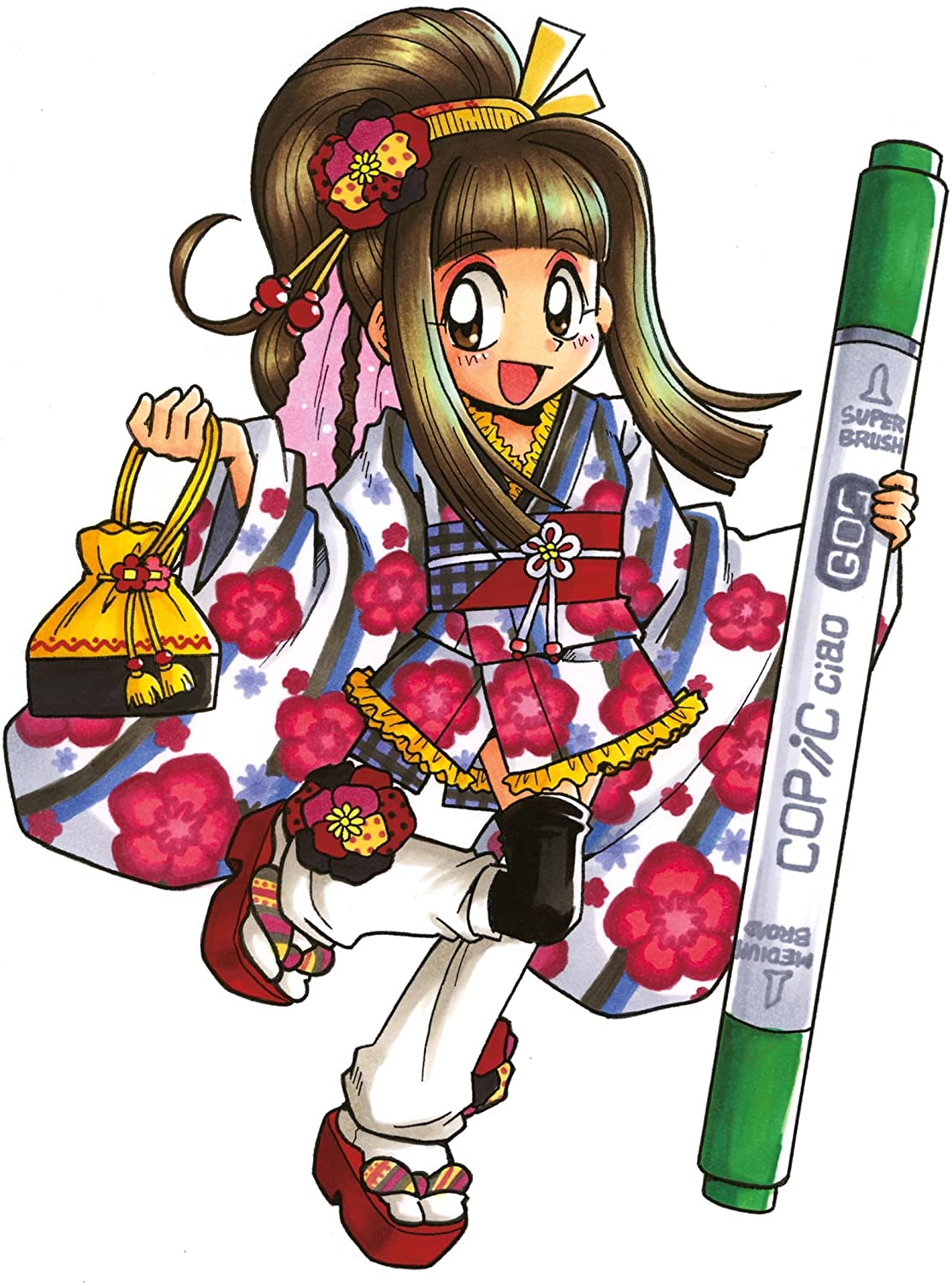
A few final pointers
Copic markers are the most trusted marker paper brands. There are indicators in the packaging to determine if the paper is for Copic Marker Paper. Cardstock, blending cards, bristol paper and marker papers are smooth with a weight of at least 70 gsm and above. Not all thick papers are made for blending, so don’t use Office-grade cardstock for blending.
Store papers horizontally to prevent bending, curling and creasing, and creating. Watercolour paper is made for liquids, so it will absorb your marker ink faster.
Other Important Factors to Consider
The best paper to use with Copic markers should possess at least two characteristics: smoothness and thickness. The best papers for Copic include blending cards, bristols, and bristols. The thickness of the sheets plays a role in bleeding prevention.
Art supplies manufacturers fabricate different types of paper for the art markers to meet the needs of illustrators, calligraphers, architects, designers, art students, and hobbyists. For example, blending cards are smooth so the tips can glide and mix colours effectively.
Conclusion
There are many options for paper sheets that work well with Copic markers, but you want to make sure it is durable and stands up to the sharp points of your marker. You are looking for something that is smooth but not shiny, with a texture that is fairly smooth.
I like the look of paper with less tooth, but if you like a more textured feel to your pages, try those and see if it works for you.
Best Advice – best paper for copic markers
The best advice is to just experiment and see what you like best. You might be surprised with the results!
And remember, if you have any other suggestions of good paper for Copic markers or a favourite brand, please get in touch to let us know!
I wish you good drawing and happy colouring!
Affiliate Disclosure
In compliance with the FTC guidelines, please assume the following about all links, posts, photos and other material on this website:
Any/all of the links on this website are affiliate links of which The Big Red Illustration Agency receives a small commission from sales of certain items, but the price is the same for you.
www.bigredillustrationagency.com is a participant in the Amazon Services LLC Associates Program, an affiliate advertising program designed to provide a means for sites to earn advertising fees by advertising and linking to Amazon.com & Amazon.co.uk. Pages on this site may include links to Amazon and its affiliate sites on which the owner of this website will make a referral commission.
Cookie preferences: cookie preferences
Written By Adam Rushton
Adam has made a name for himself in the illustration industry and is a passionate blogger and writer on the subject of art, illustration and graphic design.
His artwork has been featured in countless publications and used for very well-known media projects. As a professional illustrator for over 20 years, Adams media outlets, a wealth of knowledge, and experience enable him to consult and advise artists and illustrators in this country (from York and Manchester to Southampton and London) and all over the world.

